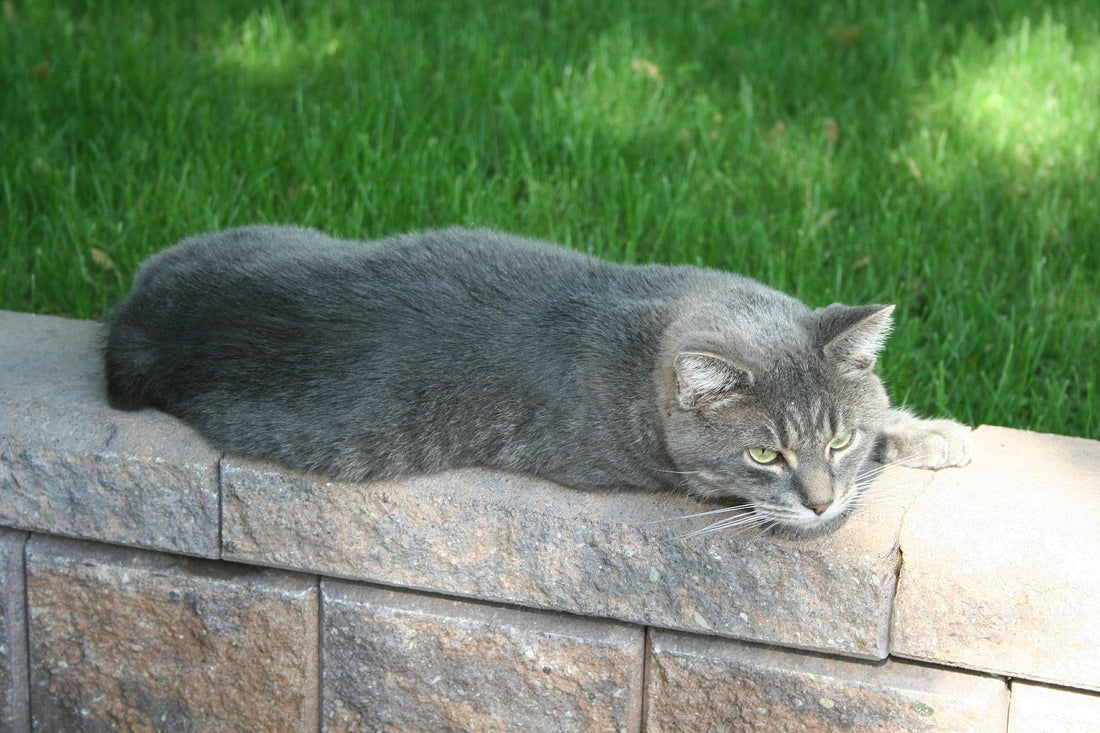
Manx Syndrome in Cats: What you need to know
Share
Manx is a breed of cat that’s known for being tailless. This can cause certain health concerns which has been called Manx Syndrome in Cats. Manx Syndrome consists of problems such as the following:
- Function of Hind Legs
- Urinary Bladder Issues
- Colon Issues
The reason these issues arise in Manx Syndrome is due to the spinal segments not fully developing causing a shortened spine and spinal cord. It’s common for Manx cats to not have any issues at all, but these are the most commons causes and health concerns.
Genetically inherited diseases are very popular in cats here are 7 common genetic disorders.
Inheritance of Manx Syndrome in Cats
In most cases the Manx cat is born with a dominant trait that causes the Manx Syndrome. However, signs of Manx Syndrome due to spinal abnormality can differ. Majority of Manx cats have the gene and can produce tailless kittens.
The condition is genetic and most inheritance of the disorder comes from the genes of the Manx Cats. It can move from one generation to the next, but what we want to understand is being tailless negatively impacts the development of the spinal cord which can cause health concerns.
Spina Bifida
The failure of a properly developed vertebral arch is known as Spina Bifida. This happens during the cat’s development before birth. This can lead to a variety of neurological symptoms that vary from mild to severe.
Spina Bifida is associated with the following spinal health abnormalities:
- Hydromyelia
- Syringomyelia
- Myelodysplasia
- Spinal Malformations
Signs of Manx Syndrome in Cats
Manx cats can vary from how sever the spinal cord is affected. In the worst case scenarios significant cases can cause death before birth or shortly after. The first signs appear during the developmental stages of the cat like when they begin to walk. This can take weeks or months to notice. You’ll slowly notice during development that Manx cats might have a lack of sensation in the hind legs, and some level of paralysis.
Here are more signs of Manx Syndrome:
- Secondary urinary tract infections
- Urinary scalding and staining
- Constipation
- Tailless
- Urinary or fecal incontinence
- Bunny hopping step
- Lack of sensation of the skin around the anal area
- Stance in which the cat walks on their entire foot instead of the toes
- Difficulty walking
- Rectal prolapse
Treatment for Manx Syndrome in Cats
You’ll need to see your veterinarian to review the medical history and preform a complete physical examination for a diagnosis. In some cases, we’ve had clients mentioned that CBD Oil for Cats has helped increase the quality of life for their Manx.
Unfortunately no curable treatment exists for the Manx Syndrome since it is a genetic disease. You’ll need to provide supportive care to your Manx cat while providing them with the highest quality of life. Making sure you’re on top of their hygiene, colon, and urinary tract infections can help comfort your Manx cat. In some cases your cat won’t be able to have proper bowel and urinary movements which can cause other health concerns. In any case, if you’ve found your self in this situation you must contact your veterinarian immediately.







